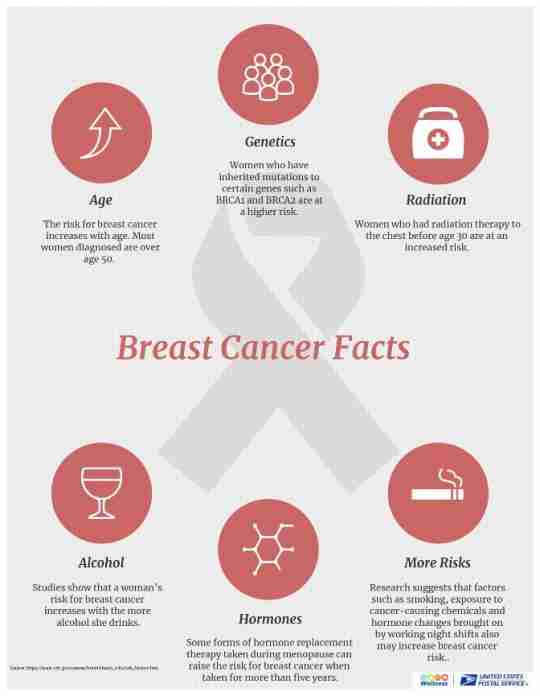Breast cancer is the second most common type of cancer for women in the United States. Men can get breast cancer as well, though it is rare. Breast cancer begins in the breast tissue when the cells in the breast change, grow out of control, and form a tumor. According to the National Institutes of Health, the types of breast cancer include:
n Ductal carcinoma. The most common type of breast cancer — begins in the cells of the ducts.
n Lobular carcinoma. Cancer begins in the lobules and is more often found in both breasts than other types of breast cancer.
n Inflammatory breast cancer. Cancer cells block lymph vessels in the skin of the breast. The breast becomes warm, red, and swollen.
n Paget‘s disease of the breast. This rare cancer involves the skin of the nipple and usually the darker skin around the nipple.
The causes can be genetic or environmental. Higher risk factors for breast cancer include:
n Giving birth at an older age.
n Having an inherited risk of breast cancer (including BRCA1 and BRCA2 gene changes).
Signs and symptoms include breast pain, change in size or shape of the breast, or a lump in or near the breast or armpit. If you notice any of these signs or symptoms, contact your physician immediately. Your physician will conduct diagnostic tests, such as a mammogram, ultrasound, biopsy, blood test, or a physical exam to check for lumps.
Performing self-examinations regularly, as well as getting regular mammograms (frequency recommended by your physician), can help; early detection of breast cancer is key. If you are overdue for a mammogram, schedule it today.
This information does not constitute medical advice, and individuals should consult their own health care professionals.


